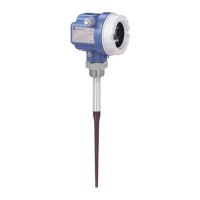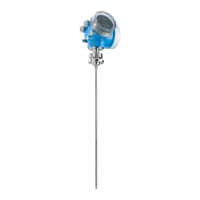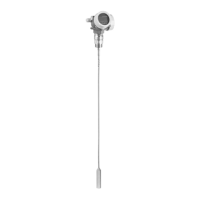1.1 Measurement principle
Micropilot is a "downward looking" time-of-flight system which measures the distance
from the probe mounting (top of the tank) to the surface of the process medium.
Short microwave pulses are beamed by the antenna towards the product, reflected by
its surface and detected by the same arrangement.
An inactive length at the start of the rod antenna delays the launch of the pulse for a
distance of 100 mm or 250 mm, ensuring that condensation or build-up in the mounting
nozzle does not affect the measurement.
Input The reflected microwaves are detected by the antenna and passed on to the electronics.
Here a microprocessor evaluates the signal and identifies the echo produced by the
reflection of the beam at the product surface. The algorithms used for signal processing
are based on many years of experience in time-of-flight measurement.
The distance D to the product surface is proportional to the time-of-flight of the microwave
pulse t:
D = c • t/2
where c is the speed of propagation
Since the empty distance E is known to the system, it is a simple matter to calculate the
level L:
L = E – D
The datum point for "E" is the bottom face of the process connection.
Micropilot has an echo suppression function which can be activated by the user. This
prevents interference echoes, e.g. caused by fittings within the beam, from being
interpreted as the level echo.
Output Micropilot is calibrated by entering the empty distance E, the full distance F and an
application parameter, which automatically tunes the instrument to the measuring
conditions.
For versions with current output, the points "E" and "F" correspond to 4 mA and 20 mA,
for digital outputs and the display to 0% and 100% level.
F
E
D
BA171Y06
datum point
beam
launched
here
inactive
length
datum point
max. level
Fig. 1.2
Microwave measurement
principle
Chapter 1 Introduction Micropilot FMR 231
6 Endress+Hauser

